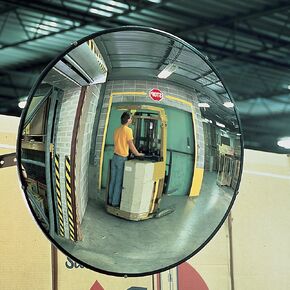- Shopping, made easy.
- /
- Get the app!
Precision-crafted with high optical precision, the Stahwille 77401057 Stainless Telescopic Stainless Steel Mirror is an unbreakable mirror made of stainless steel (FOD). It is designed with a rust-proof stainless steel telescopic arm to ensure durability, longevity, and dependable performance. Featuring a universal joint that operates at 180 degrees, self-tensioning enhances reflectivity across the visible spectrum. It also has a unique plastic handle that ensures a firm grip and safe operation, resistant to chemicals, for a dependable and enhanced viewing experience. Made in Germany as a premium tool. As a traditional German company from Wuppertal, we have stood for tools valued worldwide for their excellent quality for over 160 years. Stahlwille knows no compromises. All the products made by this company are manufactured at three locations in Germany under the most stringent quality control conditions. The latest manufacturing methods coupled with the use of the highest-grade materials ensure the closest tolerances are adhered to. And last but not least, it is the proximity to the customer and understanding of production processes and requirements that generate the innovation that the market needs.
 Bollard Car Kit Plastic Traffic Cones Orange Traffic Cones Driveway Markers Road Markers Poles Road Marking Poles Traffic Facility Water-fillable Warning Pile Pu Yellow
KWD 15
Bollard Car Kit Plastic Traffic Cones Orange Traffic Cones Driveway Markers Road Markers Poles Road Marking Poles Traffic Facility Water-fillable Warning Pile Pu Yellow
KWD 15
 See All PLX30 Circular Acrylic Indoor Convex Security Mirror, 30" Diameter (Pack of 1)
KWD 59.500
See All PLX30 Circular Acrylic Indoor Convex Security Mirror, 30" Diameter (Pack of 1)
KWD 59.500
 QWAYPOST-33-B9 Black Post with 7" x 6" Black Webbing, Pack of 2
KWD 41
QWAYPOST-33-B9 Black Post with 7" x 6" Black Webbing, Pack of 2
KWD 41
 Aluminum Expandable Portable Barricade Gate with Casters Expansion Size 201×15.2×40.6 inches Garden Fence, Brown
KWD 63
Aluminum Expandable Portable Barricade Gate with Casters Expansion Size 201×15.2×40.6 inches Garden Fence, Brown
KWD 63